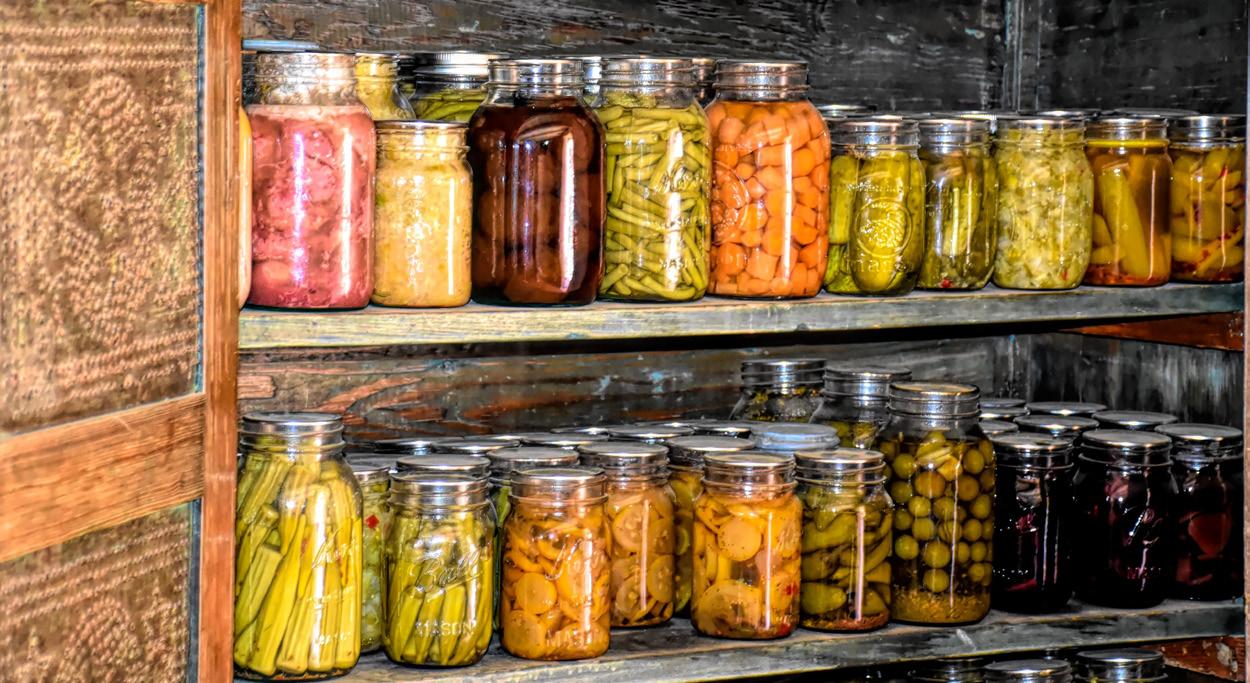
5 minute read
HOW TO APPLY SURVIVAL TO HOMES AND GARDENS
Firstly, I’d like to personally thank everyone who has been supporting the magazine, from the staffers and writers to the subscribers; we’re glad you’re here as we share lots of info to help make life better.
Secondly, I felt it was important to share a driving concept behind the magazine, which is quite simply, all your survival skills can be applied to your home and garden life, and much of what you do at home can be applied to your survival, too.
Advertisement
Next, let’s get after some key basics. All survival skills can be useful in many aspects of home life, from everyday emergencies to long-term survival scenarios. Here are some ways you can apply survival skills to home life:
1. Food storage and preservation: Knowing how to store and preserve food can save money and ensure you have enough food in case of emergency. You can learn how to can, dehydrate, and store food for long periods of time. We like to use sugar, salt, and smoke for storing meats and canning for fruits and vegs.
2. Gardening and farming: Learning how to grow your own food can be a great way to ensure a steady supply of fresh produce. Even if you only have a small garden or balcony, you can grow herbs, vegetables, and fruits. Aquaponics are a great way for urbanites to keep a small food farm in their homes, and you can even grow tiny pots of spices and herbs on any kitchen counter.
3. Home repairs and maintenance: Knowing how to repair and maintain your home can save you money and prevent small problems from becoming bigger ones. You can learn basic plumbing, electrical, and carpentry skills. If you can’t master all of them, at least get the basics for them all and try to master whichever best suits your interests and capabilities.

4. Self-defense: Knowing how to defend yourself and your family can help you feel safer and more secure in your home. You can learn self-defense techniques, practice situational awareness, and invest in security systems. It is always better to have a plan before you need it and make sure everyone is trained what to do in that plan. Prevention is better than response, if possible.
5. First aid and medical care: Knowing basic first aid skills and how to care for common injuries and illnesses can be useful in emergencies. You can learn CPR, how to treat burns and cuts, and how to recognize and respond to common medical emergencies. Have a good supply of basic first aid gear, some advance kit if you know how to use it, and for sure, keep a supply of medicine for snivels to diseases.
6. Communications systems: You can learn about personal cell phone towers, signal boosters, HF/ham radio, CB radio, family and marine radio, Morse code. Have a plan, practice it, and test your equipment regularly.
By applying survival skills to home life, you can become more self-sufficient and prepared for emergencies.
If you want to make your garden into a food source, here are some starter points to consider:
1. Choose the right crops: Some crops are better suited for survival gardening than others. Look for crops that are high in calories, easy to grow, and can be stored for a long time without refrigeration. Examples include potatoes, sweet potatoes, beans, peas, squash, corn, and tomatoes. It’s good to grow some root vegetables so you can have winter vegs.
2. Plan for year-round production: To ensure a steady supply of food, plan your garden so you have crops that will produce throughout the year. This may require staggered planting and the use of cold frames or other season extension techniques.
3. Save seeds: Saving seeds from your crops allows you to plant again the following year without having to purchase new seeds. Make sure to store them properly in a cool, dry place. We try to germinate many of our seeds in the house beforehand as it’s always nice to plant a seed you already know will yield.
4. Compost: Composting is a great way to improve the fertility of your soil without relying on synthetic fertilizers. It also allows you to recycle food scraps and yard waste. We have a nice one in our kitchen that allows us to make compost daily from our food prep scraps. So we have a revolving plan for feeding all our plants and crops.
5. Learn preservation techniques: In order to make your garden into a true survival food source, you will need to learn how to preserve your harvest. Techniques like canning, dehydrating, and fermenting can help you store food for longer periods of time. My fave is smoking but it is labor intensive.
6. Consider livestock: Depending on the size of your garden and the resources available, you may want to consider adding some livestock to your property. Chickens, rabbits, and goats are all good options for small-scale farming and can provide a source of protein in addition to your crops. And for you urbanites, it sounds hard core, but “Puffy” is always an emergency food source when it comes to your kids starving…
Remember that building a survival garden or raising animals takes time and effort, but it can be a valuable investment in your long-term food security.
There are several steps you can take to make your home safer for survival in emergency situations: mykelhawke.com
1. Have an emergency kit: Prepare an emergency kit with essential items such as water, non-perishable food, first aid supplies, flashlights, batteries, and a portable radio. Make sure to store it in a safe and easily accessible location. We preach this all the time, so we won’t belabor it here, but have varied kits for everyone.
2. Secure doors and windows: Install sturdy locks on doors and windows to prevent unauthorized entry. Consider reinforcing doors and windows with steel bars or shatter-resistant film to protect against forced entry or a vicious storm.
3. Create a safe room: Identify a safe room in your home where you can take shelter during extreme weather events or other emergencies. The room should be located in the interior of the house, away from windows, and have a sturdy door. This doubles as a safer place for hurricanes and tornados. Be sure to make it safe for fires too, with extinguishers, oxygen masks, water and fire blankets.
4. Install smoke detectors and carbon monoxide detectors: Make sure to install working smoke detectors and carbon monoxide detectors in every room of the house. There is some cool tech out there right now that can monitor everything in your house by getting a baseline measurement, then it can tell you if a light is out, a toilet is leaking, or a vent is not working.
5. Have a backup power source: Consider investing in a backup power source, such as a generator or solar panels, to provide power during power outages. I recommend many kinds— electric, gas, solar, and even hand crank—and have many sizes for different jobs.
6. Learn basic first aid: Learn basic first aid skills and keep a well-stocked first aid kit in your home. I recommend the Wilderness First Aid course as the very best a non-medical person can take; it allows you to do the most.
7. Practice emergency drills: Practice emergency drills with your family to ensure that everyone knows what to do in case of an emergency. Make it fun, but do it at least once a year.
By taking these steps, you can help ensure that your home is a safe and secure place for survival in emergency situations. There are many gadgets, gizmos, and goodies that can make it easier and I highly recommend you do as much as you can.
Things will likely be very miserable, so there’s no need to make it more of a misery-fest than is necessary. That said, keep an eye on this space as we share lots of solutions for all these challenges.
Happy Survivalin’!
Mykel Hawke is the author of numerous survival books and has created and been featured in a variety of survival shows, including The Discovery Channel’s Man Woman Wild.










